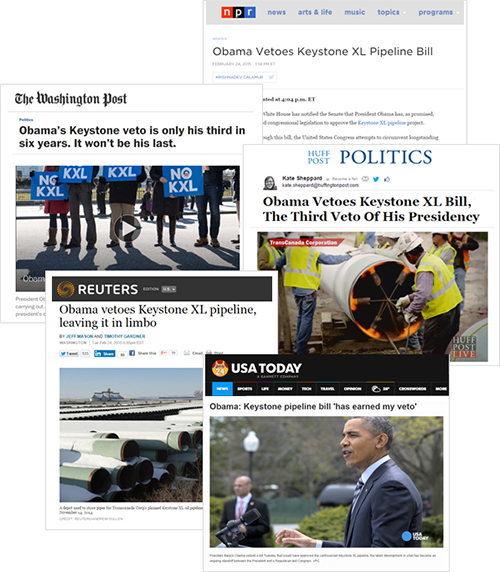That’s exactly what happened last week when CNN covered President Obama’s intention to veto the Keystone XL pipeline that would transport oil from Canada to Mexico.
Check out the headline.
“Meet the pen Obama used to veto the Keystone XL pipeline.”
Obviously, the focus of the story lies on a Presidential decision.
Yet, the pen makes headline.
But we don’t actually “meet the pen” until almost 500 words later at the very end of the story:
That pen is a left-handed Cross Townsend, assembled at the 169-year-old company’s plant in Lincoln, Rhode Island, from components made in China.
“The old saying goes the pen is mightier than the sword, and in these days we don’t use swords anymore, we use pens,” said Bryan Fournier, vice president of operations at Cross Pens.
What’s going on here?
This is a case where the needs of journalism and PR converge as one. I continue to believe that PR underutilizes the anecdote as a storytelling technique, and this is why the Cross Pen example stood out.
CNN is looking for a way to differentiate its news story on President Obama exercising his veto power.

As you can see from the smattering of headlines above, all of them essentially say the same thing.
On the PR side, Cross Pen is looking to “borrow” the news event as a way to shine the national spotlight on its product.
Reverse-engineering the story, all cues point to Cross pitching the anecdote as an exclusive. I say this because the anecdote doesn’t appear in any other coverage. It says something about the power of anecdotes in today’s journalism that they can be pitched this way.
And the end of the story, specifically the clichéd comment from the Cross executive around the “pen is mightier than the sword, points to a pitch.
But the most revealing data point comes from the 81-second video that accompanies the news story in which the pen takes on the lead role. We even get a peek into the manufacturing process and learn that making pens for presidents is indeed cool (her words, not mine).
The video offers another proof point that “sausage making” content — the process and actions that take place behind the curtain — makes for an effective storytelling technique.
Note: Kudos to one of our senior account professionals in our Pacific Northwest office, Kali Bean, who brought the CNN story to my attention. I’ll be making the trek to our Pacific Northwest office later this week to take the entire team through our storytelling workshop.



